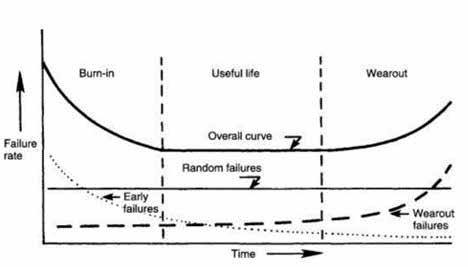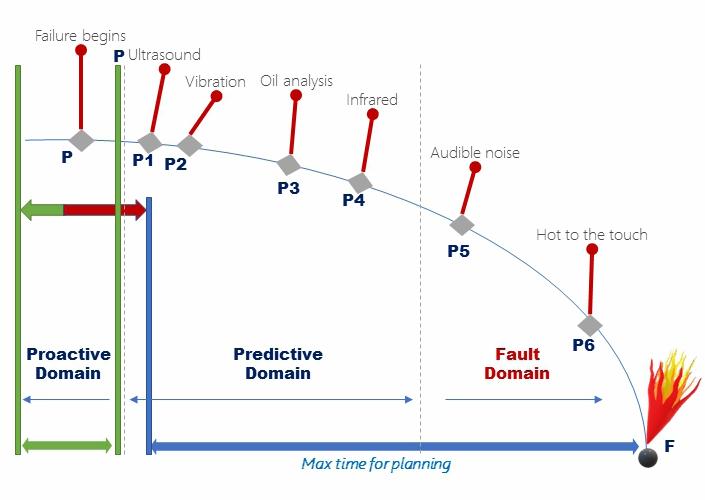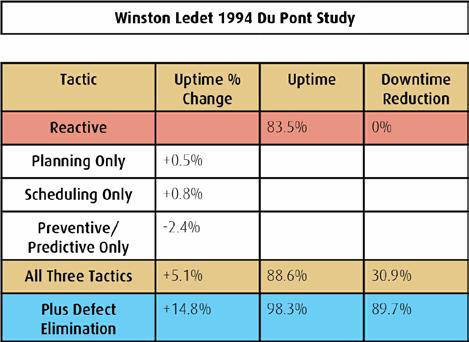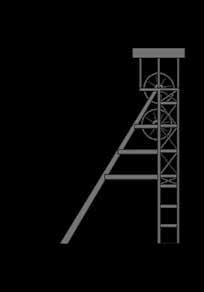
7 minute read
FEATURE A new perspective on modern-day maintenance
By Raymond T. Chizu, Business Developer, WearCheck Zimbabwe

Advertisement
LearCheck provides thousands of customers each year with world-class condition monitoring (CM) services, which have been proven time and again to save time and money for companies by identifying potential machine failure before it happens and remedying the problem.
However, in our line of work as condition monitoring (CM) specialists, we still do come across customers who have everything to gain by using the CM techniques we offer but, unfortunately, they don’t see the benefits to be gained. No matter how hard we try to convince them, they stubbornly continue to refuse help.
In this article, I’m going to try to get to the bottom of this standoff and hopefully we’ll find ways to engage every maintenance organisation to employ condition monitoring techniques whenever it is economically practical to do so.
I’m going to start with the definition of maintenance and then go through the changes to which maintenance has been subjected over the years. This knowledge, I believe, will help us understand some conflicting behavioural patterns exhibited by some maintenance personnel.
The verb ‘maintain’ gives the idea of preserving/keeping a certain status or specification. In engineering terms, maintenance is the execution of those tasks that ensure that the asset/plant owner achieves design and performance specifications of their asset/plant in order to meet their business objectives.
Let’s take a look at the internal combustion engine as an example. For the engine to operate at optimum level, the lubrication system must be at a certain pressure and temperature, the cooling system at a certain temperature, and the fuel system and the compression should be at a certain pressure. In this case, maintenance activities will include regular testing, adjusting, lubricating and cleaning.
The focus of maintenance should be upon the ‘wellbeing’ of the plant/asset – when the task is to ‘fix it’, then maintenance has failed its basic mission, quite possibly through no fault of its own. With the definition out of the way, let’s look at how maintenance has changed during the course of time. Modern maintenance has gone through three generations:
First generation
Its inception is traced back to the beginning of the industrial revolution right up to about the First World War. Maintenance then was premised on the ‘Fix It When It Broke’ philosophy, better known as Breakdown Maintenance (BdM). This was ideal at that time because machinery was quite rugged, overdesigned, relatively slow running, and the instrumentation and control systems were very basic. Production demands where not overly severe and downtime wasn’t usually a critical issue. Most of the labour was manual. Even up to this day there are still some machines in existence that were manufactured around that time, which are still running as good as the day they were made.
Second generation
From the Second World War to the end of 1950s - with the rebuilding of industry after the war, a more competitive marketplace emerged, and along with this, an increasing intolerance of downtime. The cost of labour increased significantly, and this led to more and more mechanisation and automation. Machinery was of lighter construction and ran at higher speeds. These machines wore out more rapidly and were seen as less reliable (perhaps it was because they were being utilised more fully).
Production demanded better maintenance, which led to the development of Planned Preventive Maintenance (PPM). The philosophy behind this maintenance concept was that machinery should be overhauled on a regular basis regardless of whether repairs were needed. For example, in 100 pieces of identical equipment, a failure rate of 10 units within a similar period renders the probability of failure as unacceptable and the full group of machines should be overhauled (despite the significant losses in potential life in the other 90 machines). The belief was that every item has ‘the right time for overhaul’, which could be discovered and must never be exceeded.
The planning involved plant overhauls based on a time or usage interval (at which the failure rate was deemed unacceptable). Since mechanical parts always wore out, this led to the basic assumption that ‘the older the machine gets, the more likely it is to fail’ and that equipment is better protected from failure by
‘frequently overhauling’.
This is the period in which Swedish engineer/ scientist/mathematician Waloddi Weibul developed the Weibul distribution density matrix in 1951, which is popularly known as the Bathtub Curve in the maintenance field, and which was believed to be applicable to all machines.
Nowlan and Heap categorised failures into three classes: i. Infant mortality/early life/burn-in, ii. Random/useful life and iii. Wear-out/end of life failures.
Third generation
In the 1960s, with the introduction of the Boeing 747, the aviation industry - in its search for improved reliability - questioned the then trending maintenance philosophy with the basic assumption that the older the equipment gets, the more likely it is to fail.
At that time, aviation accidents were in the order of 60 per million take-offs. For an aircraft to achieve 20,000 flying hours it required some 2,000,000 man-hours of maintenance performed on a time- or hours-run basis. This basic assumption was questioned, and the failure process was extensively researched. This research, titled Reliability Centred Maintenance (RCM), was conducted by engineers Stanley Nowlan and Howard Heap for United Airlines in 1978. The research yielded six failure patterns, and out of these, only three patterns showed a relationship to increased probability of failure with age, and they totalled only 11% of failures.
The remaining 89% of failures showed no relationship to the equipment’s age. The conclusion was: failure is a random event though it has the potential to give warning of its development through changing levels of suitable measurement parameters. This study marked the birth of Reliability-based, Condition-based and Predictive Maintenance (PdM) concepts. To look out for and find these signals is the only way to identify a need for maintenance under conditions of a constant probability of failure.
As a result of this study, the aviation industry made major changes to its maintenance practices and the results were dramatic. For an aircraft to achieve 20,000 flying hours now requires 66,000 man-hours of maintenance (down from 2,000.000 hrs) representing a 3030% reduction in man-hours of maintenance.
The reduction in maintenance hours dramatically improved safety and reliability in the aviation industry (and highlighted the fact that unnecessary maintenance can be intrusive), though some of the improvements can be attributed to improved designs and technology advancements.
Engineers Nowlan and Heap’s study culminated in the invention of the P-F (Potential Failure) Curve, whose main function is to illustrate how equipment fails and how early detection of a potential failure provides time to plan and schedule the replacement or restoration of a failing part without interruption to production.

Initially, reliability-centred maintenance (RCM) was tailor-made for the aircraft industry, and the legendary Zimbabwean/British maintenance specialist, John Moubray converted it into a universally-usable technique applicable to the maintenance of any physical asset, naming his work Reliability-centred Maintenance II (RCM2) in 1991.
Further studies in maintenance are being carried out. Of interest is the Du Pont Chemical Company study carried out by Winston Ledet in 1994, which he christened The Manufacturing

Game. He came out with several interesting observations:
1. Industrial plants with a reactive maintenance culture were found to have, on average, an uptime of 83.5%.
2. When these industrial plants implemented only planning, their uptime improved on average by 0.5% (from 83.5% to 84%).
3. When these plants implemented scheduling only, their uptime improved by 0.8% (83.5% to 84.3%).
4. When these plants implemented preventive/predictive maintenance only, their uptime decreased on average by -2.4% (83.5% to 81.1%). This is due to additional downtime to conduct preventive maintenance work.
5. When these industrial plants implemented all three tactics of planning, scheduling and preventive/predictive maintenance, their uptime increased on average by 5.1% (83.5% to 88.6%).
6. When these industrial plants practiced planning, scheduling, had a preventive/ predictive maintenance programme and implemented Defect Elimination, their uptime increased by a whopping 14.8% (83.5% to 98.3%).
This is what is shown in the Winston Ledet 1994 Du Pont chart.

Conclusion
We’ve had an in-depth analysis on the subject of maintenance, and I believe we can now tackle the issue raised at the beginning: “why do some maintenance plants fail to embrace condition monitoring?”
In their 1978 United Airlines RCM report, Nowlan and Heap addressed a similar question: Why do most maintenance organisations manage equipment reliability with time-based preventive maintenance (PM) programmes?
And this is what they had to say: “The chief focus has been on anticipating the age at which equipment was likely to fail, rather than on how it fails and the consequences of such failures. As a result, there has been insufficient attention to the failure process itself, and even less attention to the question of ‘precisely what constitutes a failure’?”
That mentality hasn’t changed much some 50 years later. So, what it means is that the default maintenance concept is timed-based preventive maintenance and reactive/breakdown maintenance spiced with some elements of RCM, CBM, predictive and proactive concepts. Though there are organisations that are successfully implementing RCM, at the same time there are many more who are not at all successful at it. The sad part is that there are numerous studies that have been carried out by renowned maintenance gurus on the subject over the past 50 years or so, which are now ‘gathering dust’ on the internet. Could it be that most maintenance personnel do not understand the RCM studies, hence they aren’t utilising them?
My answer to the question posed right at the start of this article – why do some organisations not embrace a good condition monitoring programme? - is that maintenance organisations that do not seek out CBM/predictive maintenance services are stuck in the 1st and 2nd maintenance generations.
Personally, I don’t believe failure to do CBM has everything to do with setup, it’s more to do with the maintenance culture of the organisation in question. Though one could succeed to set up CBM in a breakdown maintenance environment (this could be mainly due to strong willpower and perseverance from certain individuals), the question of sustainability arises. Will this continue after the leading individuals are no longer occupying their current posts?
Mining Indaba 2023
WearCheck looks forward to welcoming visitors to its stand (D16) at Mining Indaba from 6 – 9 February 2023 in Cape Town.
For more information, please visit www.wearcheck.co.za, or email support@wearcheck.co.za or call WearCheck head office in South Africa on +27 (31) 700-5460.
WearCheck, Africa's leading condition monitoring company, is committed to serving the mining industry with its range of sophisticated analytical techniques.
Our specialist oil, coolant and fuel testing programmes allow customers to reduce maintenance costs, avoid unexpected mechanical failures and ultimately reduce unscheduled downtime.
Unlock Machine Reliability!
AFRICA’S LARGEST ENERGY, OIL & GAS CONFERENCE AND EXHIBITION
JOIN THE 2023 PROGRAMME
100+ 300+
INDUSTRY EXPERTS
PARTICIPATING COMPANIES
HARNESSING A SUSTAINABLE AFRICAN ENERGY INDUSTRY THROUGH PARTNERSHIPS
• AFRICAN CONTENT SERIES
• DIVERSITY, EQUALITY AND INCLUSION
• SAIPEC PROSPECTING
• THE SAIPEC AWARDS
SCAN THE CODE TO REGISTER
#SAIPEC2023
• SAIPEC TECHNICAL PROGRAMME
• BUSINESS MATCHING
• PETAN GOLF DAY
SCAN THE CODE TO VIEW THE PROGRAMME

REGISTER NOW AT SAIPEC-EVENT.COM/REGISTER
SPECIAL EARLY RATE ENDING SOON
SPECIAL RATES AVAILABLE TO PETAN MEMBERS






